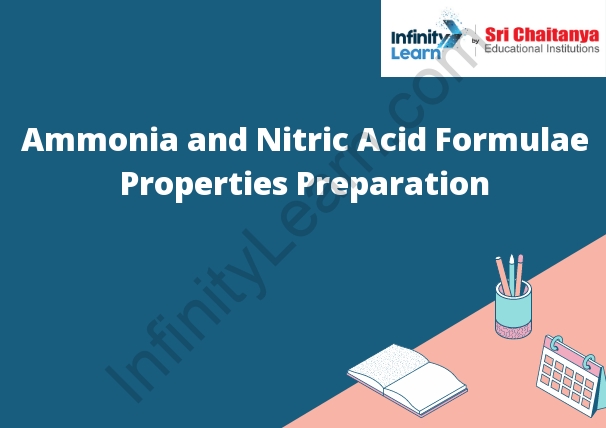Table of Contents
Uses of Ammonia ;
Ammonia is used in a variety of ways, the most common of which is in household cleaners. Ammonia is also used as a fertilizer, and as a refrigerant.

Preparation Of Ammonia
Ammonia is produced industrially by the Haber process, which combines nitrogen gas and hydrogen gas to form ammonia. The process requires a high temperature and pressure to break the nitrogen molecule apart, and the ammonia is then cooled and collected.
Physical Properties of Ammonia
The physical properties of ammonia depend on the concentration of the gas. At standard temperature and pressure, ammonia is a colorless gas with a pungent, suffocating smell. It is very soluble in water and is a powerful base. It is also flammable and can form explosive mixtures with air.
Chemical Properties of Ammonia
Ammonia is a colorless gas with a pungent odor. It is composed of one nitrogen atom and three hydrogen atoms. Ammonia is a very strong base and can react with acids to form salts. Ammonia is also a powerful refrigerant.
Uses of Ammonia
There are many uses of ammonia. It is used in many industrial processes, including the production of fertilizer, explosives, and plastics. It is also used as a refrigerant and in the production of cleaning products.
Nitric Acid
Nitric acid is a corrosive, colorless, and highly acidic liquid. It is used in the production of fertilizers, explosives, and other chemicals. Nitric acid is also used in the manufacturing of gold, silver, and other precious metals.
Preparation of Nitric Acid
1. Nitric acid is produced commercially by the Ostwald process, which involves the oxidation of ammonia with air in the presence of a platinum catalyst.
2. The first step in the process is the reaction of ammonia with oxygen to form nitric oxide:
3. The nitric oxide is then oxidized to nitric acid:
Properties of HNO3
-HNO3 is a colorless, corrosive mineral acid.
-It is a strong acid that is soluble in water.
-HNO3 is capable of dissolving many metals and forming nitrates.
-It is used in the manufacture of explosives, dyes, and other chemicals.
-HNO3 is also a common ingredient in fertilizers.









